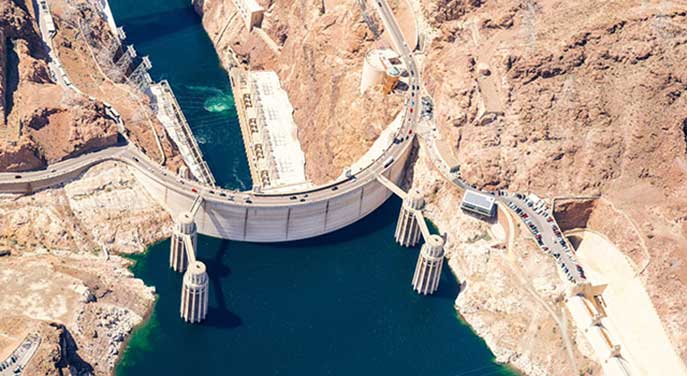 Economists often talk about over-constrained problems. These are situations where there are so many goals to be reached and/or so many limitations that it’s impossible to find a solution that meets all requirements.
Economists often talk about over-constrained problems. These are situations where there are so many goals to be reached and/or so many limitations that it’s impossible to find a solution that meets all requirements.
Contrast this with advice often given to politicians to never talk about anything that can’t be fully described on a bumper sticker. Our desire for simple problems with easy solutions often runs headlong into the convoluted complexity of the real world. One such situation was described in the Economist of July 10.
It concerns the Klamath River, which flows from Oregon down through northern California. Dams on this river could generate enough hydroelectric power to provide for 140,000 homes, although only half of that is being produced. The dams have also produced artificial lakes where water is stored.
This should all be good news for those who are concerned about the environment and global warming. Hydro power is clean, renewable and emission free. The lakes behind the dams provide an easily accessible source of water to the aircraft that fight the forest fires that have been plaguing California through its long, ongoing drought. Other sources of water to fight the fires are not as plentiful or easily accessible.
But it’s not all good news. Indigenous groups and others have noted a reduction in salmon and other fish in the waters below dams. They blame this on the fact that dams prevent migratory fish from swimming up river to spawn. Food fishing, commercial fishing and sport fishing are all hurt when fish stocks are diminished.
There’s a relatively simple though not necessarily cheap solution for the migratory fish. Put in fish ladders. Such devices are often used to enable fish to avoid impediments on their traditional upriver routes to reach their spawning grounds. Such ladders exist for part but not all of the river. Fish cannons provide a similar function, although this solution has been rejected.
Instead, some groups have been damning the dams as anthropologic interference with the natural world. Their solution is to destroy the dams and drain the lakes above them.
Surprisingly, both the Federal Energy Regulatory Commission and PacifiCorp, the power company that operates the dams and generates the hydro power, are prepared to demolish four of six dams next year.
How will the current and future potential supply of electricity that the dams could generate be replaced?
No problem, according to PacifiCorp. They have other sources of power. Unfortunately, that power is generated by burning coal. Instead of clean, green hydro power, the lights and air conditioners will be kept on by burning the dirtiest and most polluting of carbon-based fuels.
Draining the artificial lakes won’t be a happy return to a simpler, more natural state. Indigenous burial grounds under the lakes have been protected by the water. Exposing them would leave them open to desecration and the theft of artifacts.
Removing the dams will cost close to half a billion dollars, with about 50 per cent of that being provided by government – taxpayers. The remainder will be paid for in the form of higher electricity costs.
No doubt the proponents of demolition are feeling both virtuous and victorious. They’re improving the prospects for fish and bringing the Klamath River area closer to its original natural state, even though they rejected the less damaging alternatives of fish ladders or fish cannons.
Are they aware that the resulting higher electricity costs will impact everyone in the area, including those on low incomes? Do they realize that this will increase coal burning, pollution and global warming?
Probably not.
It’s surprising that governments or their agencies didn’t make people aware of the negative impacts of removing a major source of clean power. The demand for electricity is rapidly growing.
Global warming increases both the need and demand for air conditioning. The major heat dome in Western Canada in June saw power demand during the month exceed peak electricity use in our cold winters.
Electric vehicles will reduce the use of carbon-based gasoline. Now chargers for those vehicles are being installed in public places and private residential buildings. BC Hydro is already wondering where it will get the additional power to meet this increased demand.
Dealing with only one side of an issue – whether it’s migrating fish or electric cars – can generate more problems than it solves. We need to look at the whole complicated, messy picture and analyze all the costs and benefits of any potential solutions.
Troy Media columnist Roslyn Kunin is a consulting economist and speaker. For interview requests, click here.
The views, opinions and positions expressed by columnists and contributors are the authors’ alone. They do not inherently or expressly reflect the views, opinions and/or positions of our publication.
© Troy Media
Troy Media is an editorial content provider to media outlets and its own hosted community news outlets across Canada.




I prepared the economic analysis in 2006 that showed the costs of the measures you propose were equally expensive as decommissioning and buying replacement renewable power. Since then renewable power costs have fallen 75% so the decommissioning option is even better economically. This really doesn’t have to do with environmental protection – it’s what’s best for your electricity rates.